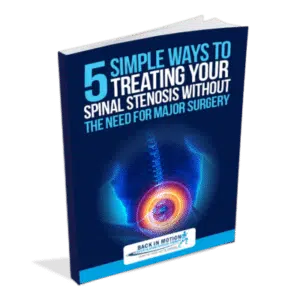What is Spinal Stenosis?
Spinal stenosis is a common back pain condition affecting the spinal cord and peripheral nerves. It tends to affect people as they get older.
In the spine there are canals that are formed by the vertebrae in which the spinal cord passes through the nerves branching off it. With arthritis, wear and tear, disc problems, fractures and injuries, the canals can become smaller. In fact, many of the vertebrae will change shape and even grow bone spurs into the canals due to abnormal stresses and strain on the spine!
If you or someone you care about is living with this condition, you know how limiting and difficult it can make everyday life.
Back In Motion Physical Therapy & Performance in Fort Myers, Cape Coral & Estero, FL offers physical therapy for spinal stenosis. Contact our clinic today to learn about our treatment options.
How Can I Avoid Developing Spinal Stenosis?

How Can I Avoid Developing Spinal Stenosis?
If Spinal Stenosis Isn’t Treated, It Will Likely Get Worse…
If you or someone you love is living with spinal stenosis or experiencing symptoms and would like to find out for sure what their diagnosis is, call Back In Motion Physical Therapy & Performance in Fort Myers, Cape Coral & Estero, FL to schedule an assessment.

Here’s Proof We Can Help You With Your Spinal Stenosis…
Our 3-Step Approach to
Addressing & Treating Spinal Stenosis
Our approach, known as the Gray Method™, focuses on targeting and resolving the root cause of your issue, ensuring that you won’t have to face it again.
We Have Over 180+ 5-Star Google Reviews
I have been seeing Dr. Sharon for a few weeks. After the 2nd visit the severe lower back pain was alleviated. So much so that I have been able to resume golf with much better swing ( although that's not saying much LoL).
If you need physical therapy this is the place and she is the right doctor.
Be prepared to work hard. If you follow directions you'll be satisfied.
Dr. Sharon has been working with me not only in strengthening my left side but also increasing my sense of balance which has definitely improved over the last several weeks. My golf game has also improved as a result of the therapy.
Dr. Sharon’s diagnostic and evaluation skills are exceptional along with her ability to arrive at a treatment plan that has reduced some of the damage from my stroke. I highly recommend Dr. Sharon and am thankful for the physical therapy which she has provided.
Thanks,
Gary C. Reich D.D.S. ( retired)

















